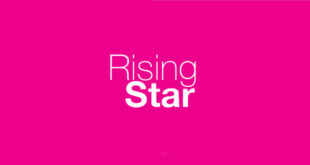Haley Uyrus is the in-house marketing manager at Failbetter Games. With degrees in Creative Industries Management and Game Design & Theory, she enjoys bringing the two disciplines together to help indies better understand how marketing can work for their game. She also made it to MCV’s 30 Under 30 this year.
As an indie dev, marketing can feel like a mysterious and insurmountable task. There are so many different facets to focus on: social media, advertising, PR, community management, events – the list goes on. If you don’t have a marketer on staff, it’s easy to miss some important areas in your marketing plan. Considering your sales funnel can help you to easily identify some of these gaps.
So what is a sales funnel? It’s basically the path potential customers take to buy your game (see picture below). There are four stages or sections: Awareness (trailers, news, SEO, advertising), Interest (reviews, streams, blogs, Let’s Plays), Decision (free trial, wishlists, play at event) and then finally Action (which is buying the game in this case). If you have an online or live game, you may also have a final piece at the bottom: Retention (community management, customer support).
Looking at your sales funnel is a great way to make sure you’re covering all your marketing bases. It helps you find bottlenecks where players may be getting stuck before buying your game. When premium mobile games were still a new market, players would see a game on the front page of the App Store, but weren’t sure what they’d get for their money and were hesitant to buy. To remedy this, many premium games offered a few levels for free, allowing players to test it out and get stuck in.
One of the easiest and most prevalent mistakes I’ve seen when working with indies is to focus all their energy (and money) on either the top or bottom of the funnel. If you focus too much on the top, many may have heard of your game, but aren’t yet convinced to buy it. If you focus too much on the bottom, a small amount of players may buy your game while the majority of your audience will be unaware it exists at all.
The sales funnel should not be generic, but instead specific to the genre, features and platform of the game. Each of the different audiences of your game should be plotted out separately. For example, with Sunless Sea and Sunless Skies here at Failbetter, we’ve dubbed our two biggest audiences as Narrative Explorers and Stats Aficionados. When we plan our marketing strategy, we know those two groups will be attracted to different game features, and so make sure there’s something specifically enticing to them at each level of the funnel.
With 100 to 200 games coming out each week on Steam alone, let alone the mobile space, the indie marketplace is only going to become more crowded. Understanding the journey a player takes from first hearing about your game to actually buying is vital and will allow your team to plan something at each stage that will capture the player’s interest. Continuously check and address your sales funnel will allow you to make sure your marketing is working efficiently toward gaining sales.

 MCV/DEVELOP News, events, research and jobs from the games industry
MCV/DEVELOP News, events, research and jobs from the games industry




